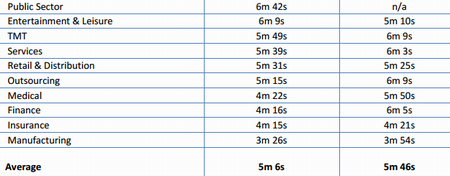Understanding and measuring call center metrics is one of the biggest challenges for managers of these organizations. That is exactly why lots of them are searching for specific industry standards that could help them track these indicators. Though there are no pre-defined standards for most of the metrics, some of them are still important enough to be monitored and analyzed regularly. So, what are these metrics and why are they so valuable? Let us find that out from the article below.
Average hold time is one of the metrics you will not go without when trying to measure the performance of your contact center. It is the amount of time people have to wait on hold before their calls are answered. The lower this indicator is, the higher the rates of customer satisfaction and contact center productivity are. To reduce this indicator, it is recommended to undertake the following steps: offer the improved self service and training options, enhance technical details and implement other changes that will meet the demand and needs of customers.
Call blocking is something that should preferably be avoided in any call center. Nonetheless, there are situations when this measure proves to be unavoidable or sometimes even useful. For example, if your call center is responsible for selling tickets for the upcoming concert and there are extreme peaks you will not be able to avoid. There are two possible ways out of this situation – either to hire more agents to meet the increased customers’ demand or to block some of the calls until agents will be able to answer them. The latter approach seems to be more reasonable and less expensive. However, call blocking is what should be used in urgent situations only. If you wish to find out whether you are using this option adequately, you will need to implement the call blocking rate metric.
In case you consider the cost per call metric essential for your contact center, there are a few additional factors to be taken into account. These include the wage levels, overhead expenses, call handling time, technology etc. Though this metric is generally applied to measure the efficacy of a contact center, it can also reflect other issues. The only thing you should bear in mind is that this metric should be measured consistently with regard to the same factors. This is the best way for you to compare the results and draw proper conclusions.
